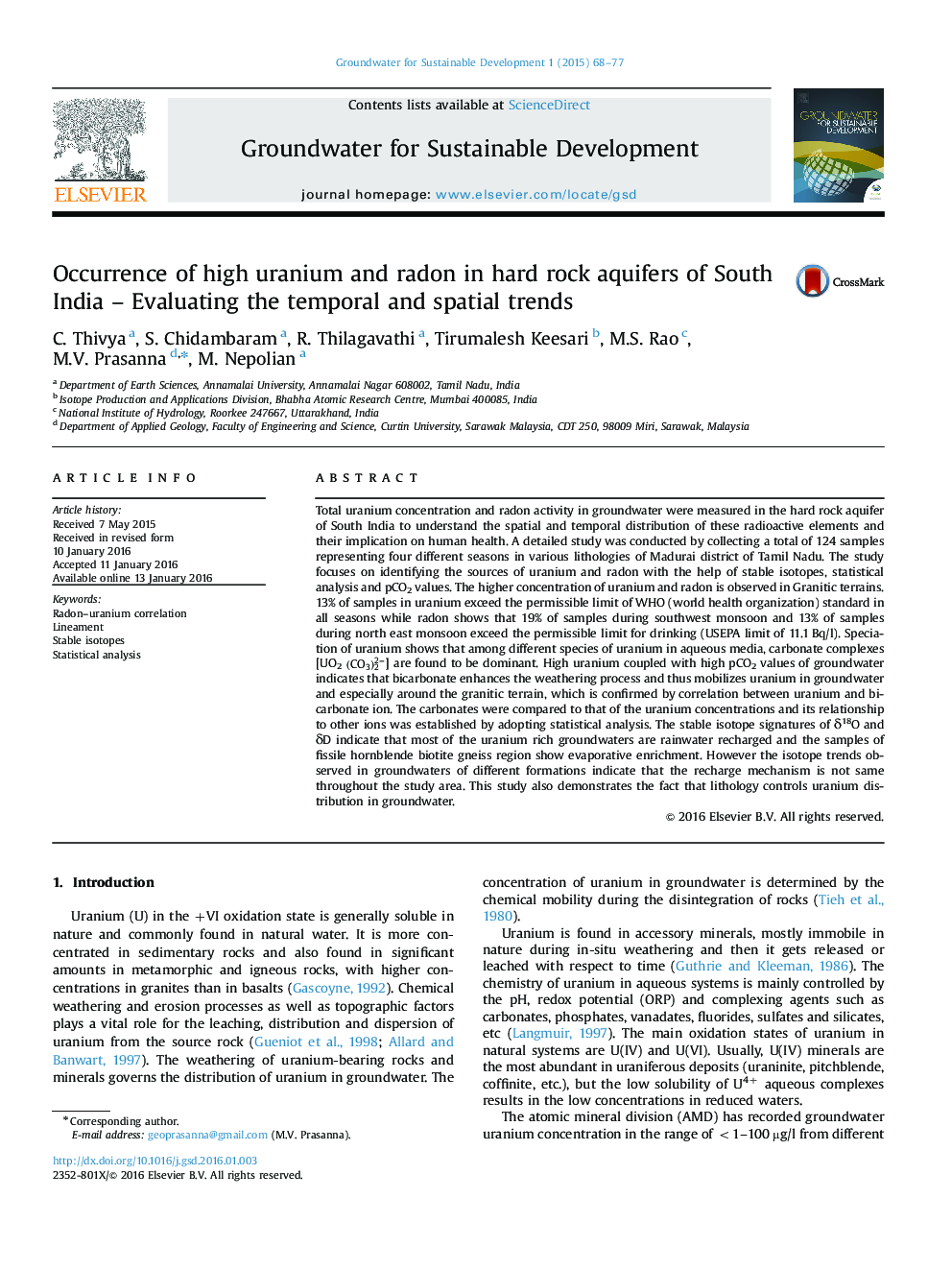| کد مقاله | کد نشریه | سال انتشار | مقاله انگلیسی | نسخه تمام متن |
|---|---|---|---|---|
| 4476274 | 1622680 | 2015 | 10 صفحه PDF | دانلود رایگان |
• Spatio-temporal variations of U in hard rock aquifers are identified.
• Relationship among 222Rn, U and chemical species are evaluated.
• U sources are delineated using isotopes, statistical analysis and land use pattern.
Total uranium concentration and radon activity in groundwater were measured in the hard rock aquifer of South India to understand the spatial and temporal distribution of these radioactive elements and their implication on human health. A detailed study was conducted by collecting a total of 124 samples representing four different seasons in various lithologies of Madurai district of Tamil Nadu. The study focuses on identifying the sources of uranium and radon with the help of stable isotopes, statistical analysis and pCO2 values. The higher concentration of uranium and radon is observed in Granitic terrains. 13% of samples in uranium exceed the permissible limit of WHO (world health organization) standard in all seasons while radon shows that 19% of samples during southwest monsoon and 13% of samples during north east monsoon exceed the permissible limit for drinking (USEPA limit of 11.1 Bq/l). Speciation of uranium shows that among different species of uranium in aqueous media, carbonate complexes [UO2(CO3)22−] are found to be dominant. High uranium coupled with high pCO2 values of groundwater indicates that bicarbonate enhances the weathering process and thus mobilizes uranium in groundwater and especially around the granitic terrain, which is confirmed by correlation between uranium and bicarbonate ion. The carbonates were compared to that of the uranium concentrations and its relationship to other ions was established by adopting statistical analysis. The stable isotope signatures of δ18O and δD indicate that most of the uranium rich groundwaters are rainwater recharged and the samples of fissile hornblende biotite gneiss region show evaporative enrichment. However the isotope trends observed in groundwaters of different formations indicate that the recharge mechanism is not same throughout the study area. This study also demonstrates the fact that lithology controls uranium distribution in groundwater.
Figure optionsDownload as PowerPoint slide
Journal: Groundwater for Sustainable Development - Volume 1, Issues 1–2, November–December 2015, Pages 68–77
